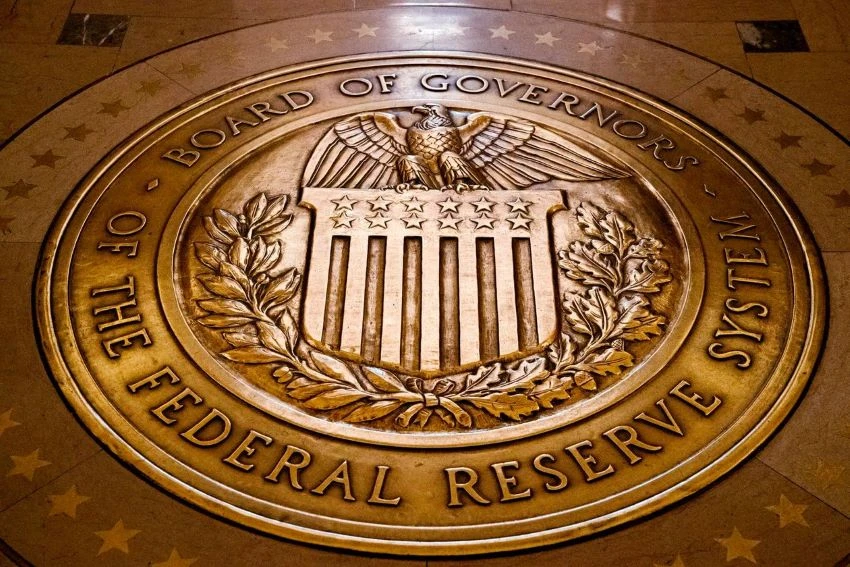
Federal Reserve Chairman Jerome Powell’s whatever-it-takes moment arrived Monday.
The central bank signaled it would do practically anything—extending loans to big and small businesses and purchasing unlimited amounts of government debt—to help an American economy in a race against time.
After firing its arsenal at funding markets last week to prevent a public health crisis from morphing into a financial crisis, the Fed said it would throw another kitchen sink this week at credit markets that have broken down. The central bank unveiled a new generation of lending facilities to prevent a liquidity crunch from turning into a solvency crisis for American businesses.
“This is the first time they’ve really basically turned into a commercial bank instead of a central bank,” said Michael Feroli, chief U.S. economist at JPMorgan.
The central bank’s announcement came as lawmakers on Capitol Hill debated a plan to help reload the Fed’s weaponry. The Trump administration and Senate Republicans proposed Sunday providing $425 billion to the U.S. Treasury that could be used to expand the kind of lending programs the Fed unveiled Monday. The bill hit a procedural roadblock after Democrats said it needed to do more to aid individuals facing unemployment or lack of income.
Monday’s announcement was “really encouraging because the Fed didn’t wait for Congress to pass this bill,” said Tiffany Wilding, economist at Pacific Investment Management Co. “I don’t think the markets could have waited.”
The central bank punctuated its moves, announced 90 minutes before markets in the U.S. opened Monday, with an unusually explicit warning about the perils ahead.
”It has become clear that our economy will face severe disruptions,” the Fed said in its statement Monday morning. “Aggressive efforts must be taken across the public and private sectors to limit the losses to jobs and incomes and to promote a swift recovery once the disruptions abate.”
Stock futures briefly rallied after the Fed announced its latest steps, but stocks traded lower after markets opened. The benchmark 10-year Treasury yield fell from 0.805% just before the announcement to less than 0.69% afterward. Yields closed at 0.763%.
”Even after today’s announcement, we’ve seen a lot of selling, and there will be a lot of selling to come, and the Fed, as a buyer, has given investors that opportunity,” said Ellen Zentner, chief U.S. economist at Morgan Stanley.
The latest actions show how Mr. Powell has rapidly adopted the crisis-fighting posture that his predecessor, Ben Bernanke, employed in the fall of 2008, during the financial crisis, and that then-European Central Bank President Mario Draghi deployed in 2012, as strains in Europe’s sovereign-debt markets threatened the continent’s common currency.
”The Fed has done almost everything in its power,” said Scott Minerd, chief investment officer at money manager Guggenheim Partners LLC. “They are rolling this stuff out as fast as they can.”
President Trump, who has frequently attacked Mr. Powell and bemoaned the strength of the dollar, said he called the Fed chairman on Monday to compliment him. “I said, ‘Jerome, you’ve done a really good job.’ I was proud of him. That took courage,” he said.
The Fed already has moved further and faster than it did in late 2008, when the failure of Lehman Brothers sparked a financial panic that aggravated an economy slowing under the weight of a bursting housing bubble. The actions announced Monday to lend to large and small American businesses take the central bank well past the playbook it used in 2008, when it was focused primarily on preventing financial institutions from failing.
The current situation is different and in some respects more dire than in 2008 because of the hard stop to economic activity across the country.
The Fed’s latest lending facilities essentially bypass the banking sector and Wall Street dealers, which the Fed has flooded with cheap loans—so far to little effect. “The dealers and banks are supposed to intermediate markets, and they’re just not able to do it,” said Ms. Wilding of Pimco.
The big question now is how quickly the Fed, working with the Treasury Department and awaiting a potential infusion of funds from Congress, can limit a deepening working-capital crunch moving across the economy.
Once the facilities are launched, officials are likely to face tricky questions about how much farther to intervene in credit markets that remain in rotten shape, especially those for longer-dated municipal debt and riskier corporate credit.
While the Fed can’t directly purchase private-sector assets or longer-dated municipal debt, it has sweeping authorities that it has now invoked six times in the past week to lend on a broad basis during emergencies. These so-called 13(3) authorities are named for the section of its charter that authorizes this activity.
Still, there are limits to how far the Fed can go. The loans must be well secured, and the Fed often seeks a backstop from the U.S. Treasury when its lending could lead to significant credit losses, which it received for three lending facilities announced Monday and two others unveiled last week.
Economists now expect the economy to experience a severe downturn. Morgan Stanley expects the economy to contract at a 30% annualized rate in the April-to-June quarter, after a 2.4% contraction in the current quarter, which it said would send the unemployment rate to 12.8% this spring—the highest on records that date to 1948.
Among the actions announced Monday, the Fed said that the purchases of Treasury and mortgage securities that it approved one week ago are essentially unlimited and that it would buy $375 billion in Treasury securities and $250 billion in mortgage securities this week.
By point of comparison, the Fed will buy more government-backed debt this week than it did during a controversial round of asset purchases, called quantitative easing or QE, that it undertook between November 2010 and June 2011, when it bought $600 billion in securities.
One week ago, the Fed cut its benchmark rate to near zero and said it would purchase at least $700 billion in Treasury and mortgage securities. It quickly bought hundreds of billions of dollars of securities, prompting Monday’s announcement to underscore the open-ended nature of potential purchases.
The action will swell the Fed’s balance sheet this week beyond the $4.5 trillion peak reached in 2014, when it ended its final QE program. To support the market for multifamily housing, the central bank said would begin purchasing commercial mortgage-backed securities issued by government-supported entities.
The Fed announced three new lending facilities to unclog credit markets with $30 billion in support from the Treasury, which officials said would enable $300 billion in financing.
The first of these includes the crisis-era Term Asset-Backed Securities Loan Facility, or TALF, which the central bank in 2008 used to support consumer and business credit markets. The Fed will lend money to investors to buy securities backed by credit-card loans and other consumer debt.
Two new facilities will support lending for large companies, an unprecedented step for the Fed. One will address the lack of new financing in the roughly $6 trillion market for highly rated corporate debt by offering bridge loans for up to four years. That program includes limits on the payment of dividends and stock buybacks for firms that defer interest payments on their loans.
A second facility is aimed at unblocking the market for existing corporate debt, allowing the Fed to purchase bonds already issued by highly rated companies and eligible exchange-traded funds, which have around $147 billion in investment-grade corporate debt.
“It’s a step in the right direction, but so far the facilities are relatively small,” said Jan Hatzius, chief economist at Goldman Sachs. “More would be better.”
The Fed said it would soon roll out a Main Street Business Lending Program that will support lending to eligible small and midsize businesses. Such a program is likely to depend on additional money from the Treasury Department, and the Fed didn’t provide details about it Monday.
In a statement Monday, Mr. Mnuchin said he expected to increase the Treasury’s support of the newly unveiled lending facilities should Congress provide the type of funding outlined in the current Senate bill.
”If it comes to fruition, this would be very powerful because $425 billion in loss protection is enormous,” said Roberto Perli, a former Fed economist who is now an analyst at research firm Cornerstone Macro.
Any action by Congress would also confer an important signal of political support for the Fed. While the central bank is operationally independent, its autonomy can be curtailed by lawmakers if they decide the Fed has misused its authorities. For example, after the Fed used its 13(3) powers in 2008 to rescue individual financial institutions, Congress barred the Fed from doing so again.
House Democrats unveiled legislation Monday afternoon that would give $50 billion to the Treasury as first-loss capital for the Fed’s small-business lending facility.
That legislation would also allow the Fed, which can only buy state and local government debt with maturities of six months or less, to buy longer-dated municipal securities. It would additionally require the Fed to establish a facility to fund coronavirus-related municipal debt issued through June 2021.
The Fed announced changes to two lending programs unveiled last week. One aims to unclog dysfunctional markets for short-term corporate IOUs called commercial paper, which will now be open to include highly-quality, short-term debt issued by states and local governments.
Another seeks to prevent runs on money-market funds, which investors generally treat as safe as cash. The Fed expanded this program to include certain municipal money-market funds on Friday, and on Monday said it would include a wider range of securities, including around $50 billion in municipal variable-rate demand notes and $280 billion in bank certificates of deposit.




















